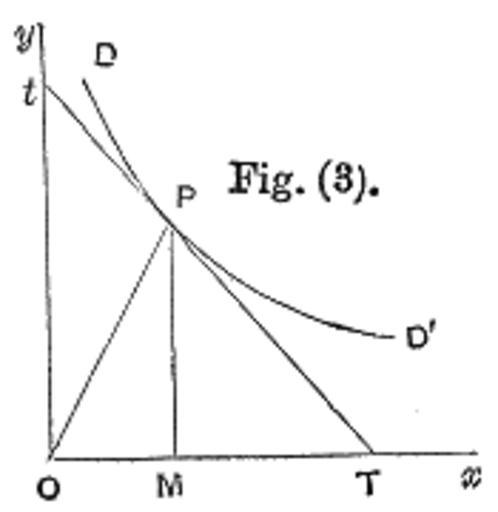MAKE A MEME
View Large Image

| View Original: | Marshall_PED.png (175x180) | |||
| Download: | Original | Medium | Small | Thumb |
| Courtesy of: | commons.wikimedia.org | More Like This | ||
| Keywords: Marshall PED.png Alfred Marshall's original definition of price elasticity of demand Captioned The elasticity of demand can be best traced in the demand curve with the aid of the following rule Let a straight line touching the curve at any point P meet Ox in T and Oy in t then the measure of the elasticity at the point P is the ratio of PT to Pt If PT were twice Pt a fall of 1 per cent in price would cause an increase of 2 per cent in the amount demanded; the elasticity of demand would be two If PT were one-third of Pt a fall of 1 per cent in price would cause an increase of 1/3 per cent in the amount demanded; the elasticity of demand would be one-third; and so on Another way of looking at the same result is this ”the elasticity at the point P is measured by the ratio of PT to Pt that is of MT to MO PM being drawn perpendicular to Om ; and therefore the elasticity is equal to one when the angle TPM is equal to the angle OPM; and it always increases when the angle TPM increases relatively to the angle OPM and vice versâ Marshall Alfred Principles of Economics http //www econlib org/library/Marshall/marP12 html Bk III Ch IV Book III Chapter IV Alfred Marshall died 1924; UK 1920 identical copy of that included in the first edition 1890 http //www archive org/stream/principlesecono00marsgoog page/n196/mode/1up PD-old-70-1923 Elasticity-related supply and demand curves Alfred Marshall | ||||